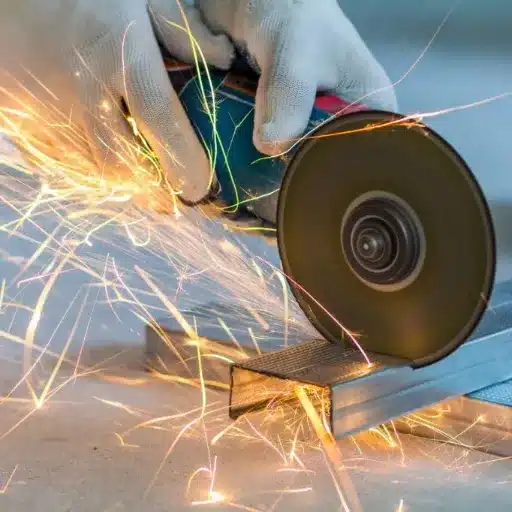Cutting stainless steel is not an easy job considering the factors such as precision and a clean cut finish. Whether you are an amateur who loves doing home projects and he is also a professional dealing with industrial materials, it is very important to know the best methods and tools to cut stainless steel. This guide will help you to find the best techniques for cutting stainless steel so that you can get both the accuracy and efficiency while staying away from the pitfalls. At the end of the article, you will be well versed in the tools, tips, and safety measures that will give you the courage to tackle the stainless steel cutting task.
Understanding Properties of Stainless Steel
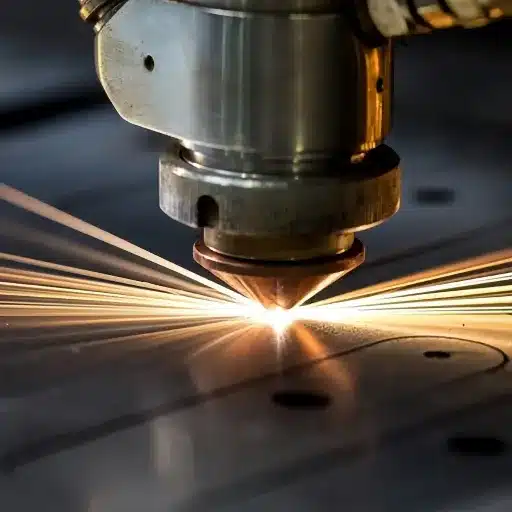
Stainless steel is a metal with excellent properties that resist corrosion, however, cutting such material requires the right tools, and techniques. Irrespective of the method, my preference always leans towards the tools such as angle grinders, saws with stainless steel blades, and grinders that yield precise and clean results.
Main Attributes of Stainless Steel
Corrosion Resistance:
The chromium content in stainless steel (at least 10.5%) is the reason for the formation of passive oxide layer on the surface which prevents the material from rusting and corroding. A case in point is the 304 type of stainless steel which has 18% chromium and 8% nickel, thus being able to easily bear most corrosive environments, while the 316 type with its 2-3% molybdenum addition is able to outperform the former in marine and acidic conditions.
Strength and Durability:
Stainless steel does not only provide high tensile but also supports durability, hence it goes for heavy duty applications. An example of Grade 17-4 PH which can attain ultimate tensile strengths of up to 190 ksi (kilopounds per square inch) is aerospace applications.
Hygiene and Cleanliness:
The surface of stainless steel that is smooth and non-porous makes cleaning easy and at the same time, it is highly resistant to bacteria infection. This property makes it a must in the medical, pharmaceutical, and food processing industries.
Temperature Resistance:
Some stainless steel grades such as 310S and 321 are specifically meant to be used in very hot conditions; thus, they keep their strength and oxidation resistance even when subjected to extreme heat. For instance, the 310S grade can stand the test of oxidation in continuous service areas with a temperature of up to 2000°F (1093°C).
Aesthetic Appeal:
Because of its surface shine and elegant look, stainless steel is a preferred material not only in architecture but also in design. Moreover it is offered in different textures like brushed, mirrored, or matte to suit the eye’s liking.
Weldability and Formability:
Different grades of stainless steel, including 304 and 316, show good weldability and formability, hence they allow for easy production into complicated shapes and designs.
Applications of Stainless Steel in Various Industries
1
Construction and Architecture
Stainless steel is the material of choice making for most of the constructions of the buildings because of its great strength, durability against bad weather, and beauty. As modern skyscrapers, bridges, facades, and interior fittings, this metal can be found everywhere. A good example is the Burj Khalifa in Dubai that features stainless steel accents for decorative purposes but also for functionality – to resist extreme temperatures and strong winds. Also, worldwide the use of stainless steel is expected to grow in the construction sector at a CAGR of 5.5% from 2023 to 2030, which will be mainly supported by the factors such as urbanization and the demand for eco-friendly building materials.
2
Automotive and Transportation
The transportation industry is the main one that exploits stainless steel the most as it is used for manufacturing the key components like exhaust systems, structural frames, and fuel tanks. The characteristics of stainless steel being lightweight yet strong contribute positively to the efficiency and safety of vehicles. Furthermore, the demand for electric vehicles (EVs) has considerably increased, which has led to the use of stainless steel in battery enclosures for the purpose of ensuring sustainability and energy conservation. According to research, the total demand for stainless steel in the automotive sector will be around 16 million tons by the year 2025, with EVs being the main force behind this rapid growth.
3
Food and Beverage Industry
Hygiene and cleanliness are the most important factors in the food and beverage industry, hence, the material used in kitchens, food processing equipment, and storage tanks has to be stainless steel. The non-reactive surface of stainless steel guarantees that the food quality remains unaltered. Industry reports claim that stainless steel use in food production has been growing at a rate of more than 4% yearly because of the worldwide enforcement of stricter food safety rules.
Cutting Techniques for Stainless Steel
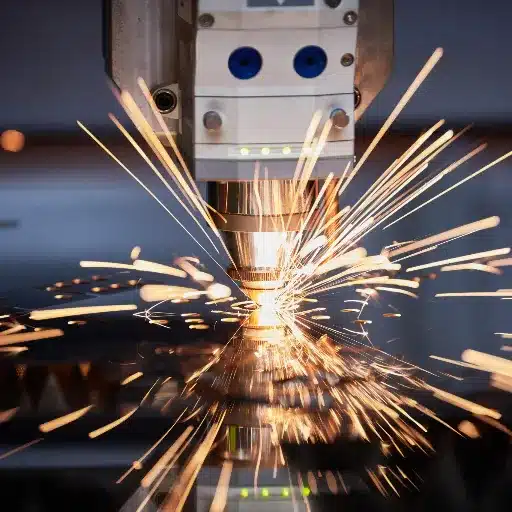
In your opinion, which are the best ways to cut stainless steel? Most likely, laser cutting, plasma cutting, and water jet cutting would be the answer as they give precision and clean edges. However for less complicated tasks, tools like angle grinders or metal cutting saws which are handheld can be efficient too. It all boils down to the thickness and intricacy of the task.
Plasma Cutting: An Overview
Plasma cutting is an accurate and quick cutting method. It is good to cut through materials which are electrically conductive including stainless steel. A jet of ionized gas, or plasma takes the place of such molten material, operating with incredibly high speeds to cut and draught the molten material. Plasma cutting is highly preferred because of the fact that it provides very clean and very accurate cuts with small heat-affected zones, the properties which help to the industries manufacturing, construction and car repair.
Recent Advancements: The plasma cutting technology has made recent strides which brought its performance to a new level. Newest systems can cut 6-inch-thick stainless steel with extreme precision and at the same time maintain cutting speed of over 200 inches per minute for thinner materials. Plasma cutting, as per industry data, is 5 times faster at times than conventional oxy-fuel cutting methods for thin or medium-thickness metal materials, hence becoming a very cost-effective option for many businesses.
Laser Cutting: Precision and Efficiency
Laser cutting has been a technology with high precision and efficiency in metal fabrication which now holds the place of being one of the major processes in the manufacturing industry. Material cutting or engraving with a focused laser beam is a method that gives exceptional precision and tolerances; often tight as +/- 0.1 mm which is very good for complex designs and detailed works. Moreover, the non-contact process leads to practically no material distortion or damage, especially when dealing with delicate or thin materials like stainless steel or aluminum.
Fiber Laser Advancement: Fiber laser cutting machines are one of the laser cutting machine advancements that have increased the cutting speeds and energy efficiency dramatically. That is to say, fiber lasers can cut thin materials at the speed of even 6 times faster than that of a traditional CO2 laser, while cutting speeds for 1 mm of mild steel reach as high as 60 m/min. In addition, the range of materials which lasers can handle nowadays has expanded enormously and include not only metals but also plastics, wood, and composites, thus becoming the versatile tools of various industries.
Tools Required for Cutting Stainless Steel
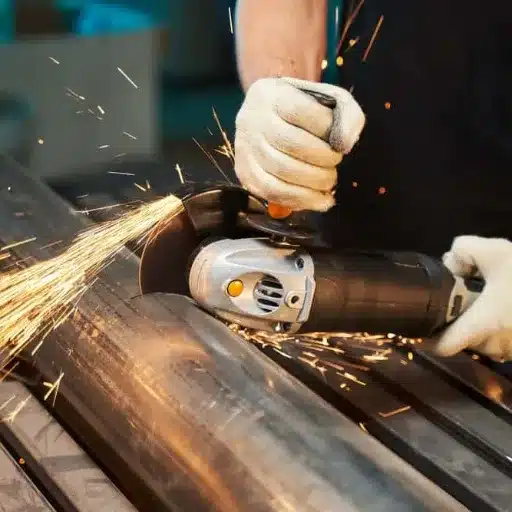
The stainless steel cutting process will demand the use of high-end tools such as either a fiber laser cutter or a CO2 laser cutter based on the thickness of the material and the accuracy level needed. Also, one might add plasma cutters, abrasive waterjet machines, and angle grinders equipped with stainless steel cutting wheels to the list of tools for less meticulous cuts.
Necessary Cutting Tools and Equipment for Stainless Steel
⚡ Plasma Cutters
Plasma cutting is a very effective technique for cutting through stainless steel sheets and plates. The process involves the use of a super-heated plasma arc that melts the metal and a stream of compressed air that removes the melted metal. The latest plasma cutters are very accurate, cutting through 1.5 inches thick stainless steel with a cutting speed of 20-135 inches per minute depending on the thickness of the material.
🔦 Laser Cutting Machines
Laser cutters are synonymous with outstanding accuracy as well as the ability to provide detailed cutting. The process involves a focused laser beam, generally CO2 or fiber laser, which is used to penetrate the stainless steel. Laser Cutting can be a choice through thickness up t0 1 inch with 10 to 40 inches per second speed range and consequently, project accuracy and smooth finish will be catered for.
💧 Waterjet Cutters
Waterjet machines are a flexible and ecologically sound option. During the process, a jet of water under very high pressure is combined with an abrasive substance and the cutting is done without any heat being generated. This method of “cutting cold” prevents heat causing any changes in shape or color and hence is suitable for very intricate and delicate cuts. Up-to-date waterjet technology can deal with a thickness of 4 inches while the accuracy of ±0.005 inches is also maintained.
Safety Measures While Cutting Stainless Steel
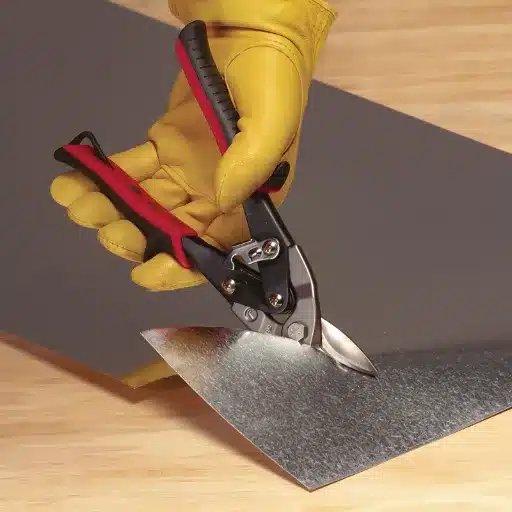
⚠️ Safety First: While cutting stainless steel, I personally always use the recommended personal protective equipment like safety goggles, gloves, and earplugs. Also, I make sure to clamp the steel and that I am using a blade for stainless steel cutting. A steady hand and adherence to the manufacturer’s safety guidelines are important for not only getting clean cuts but also for staying safe.
Protective Gear and Equipment
-
🔒 Welding Helmet with Eye Protection
A welding helmet with the right filter lens is a must according to OSHA regulations to protect the eyes from the strong light and UV rays. New auto-darkening helmets like the Lincoln Electric model 3350 series not only protect against flash burns but also give the best visibility.
-
🔥 Fire-Resistant Clothing
Fire-resistant clothing is a must for areas with sparks or molten metal. NFPA compliance is a standard you should look for when buying safety gear, and durable brands like Carhartt offer options that are both fire-resistant and comfortable.
-
🧤 Gloves
The importance of leather gloves resistant to heat in taking care of the hands cannot be understated. The Miller Electric MIG welding gloves are an example of a product that gives protection against heat and sharp metal edges while allowing the user to perform precision cutting due to its dexterity.
Workplace Safety Practices
1
Provide Proper Training
The training of workers about the risks in the workplace and the right way to handle the equipment is very critical. Frequent training will make the workers skilled in recognizing the risks and taking preventive actions. According to OSHA, proper safety training can decrease workplace accidents by up to 20%.
2
Enforce the Use of Personal Protective Equipment (PPE)
It is necessary in high-risk settings to see that the workers are all put on appropriate personal protective equipment like hard hats, gloves, goggles, and ear muffs. The National Institute for Occupational Safety and Health (NIOSH) states that when PPE is worn properly, it can avert more than 80% of serious injuries in the industrial sectors.
3
Conduct Routine Safety Inspections
Safety inspections are conducted regularly to ensure that the safety standards applicable to machinery, tools, and the work environment are being met. Checklists like the ones provided by OSHA are a good way to facilitate a quick and accurate identification of potential hazards by the organizations.
Best Ways to Cut Stainless Steel Sheet
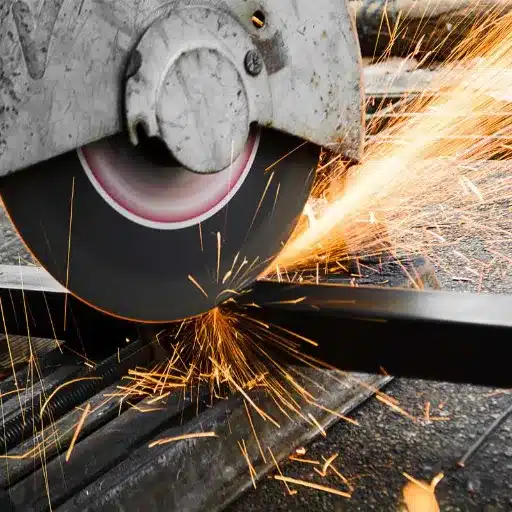
Whenever I have to cut a stainless steel sheet, the method I choose depends on the thickness and the required precision. For thin sheets, I usually cut them with tin snips or a power shear; both of them allow for straight cuts. If I am dealing with thick sheets or I am creating intricate designs, I will go for plasma cutter or laser cutting tool, as they give clean and precise edges.
Cutting Methods Comparison
| Method | Key Features | Advantages | Considerations |
|---|---|---|---|
| 1. Laser Cutting |
|
|
|
| 2. Plasma Cutting |
|
|
|
| 3. Waterjet Cutting |
|
|
|
1. Laser Cutting
Laser cutting is the method that guarantees the utmost precision when it comes to cutting stainless steel sheets. It delivers super clean and precise cuts with almost no waste of material through the utilization of a focused laser beam. Moreover, it is very suitable for intricate designs and thin sheets up to 0.5 inches thick. The current trends show that laser cutters are able to work with tolerances as close as ±0.001 inches, which makes them the perfect choice for sectors that need minute metalwork. However, laser cutting calls for a hefty initial investment and gets slower with increasing thickness of the materials.
2. Plasma Cutting
Plasma cutting makes use of an extremely fast jet of gas that is ionized to both melt and cut the stainless steel sheets. It is in particular the ability to process thicker sheets, generally up to 1.5 inches, and the relatively shorter cutting times compared to laser cutting that give this method its popularity. Plasma cutting is economical for rougher and faster cuts but is still not up to the standards of laser cutting precision. Research suggests that plasma equipment can reach tolerances of ±0.02 inches, which is still acceptable for most industrial use cases.
3. Waterjet Cutting
Waterjet cutting employs a stream of water mixed with abrasive particles under high pressure to make the stainless steel slices. The process is very effective for cutting metal thicknesses of more than 2 inches and it leaves the metal undistorted as no heat is produced during the cutting process. Waterjet is extremely accurate and the tolerance can be as tight as ±0.005 inches. However, the waterjet cutting machine takes a longer time and is costly to run because of the high-pressure pump and the need for abrasive materials.
Reference Sources
-
LinkedIn Article: “Top Stainless Steel Target Companies & How to Compare Them”
This article discusses the evolving landscape of stainless steel providers and highlights the demand for precise and reliable solutions in various industries.
Source Link -
Fortune Business Insights: “Stainless Steel Market Forecast with Size, Share, Trends”
This market report provides insights into the global stainless steel market, including its applications and growth trends across industries like construction, automotive, and manufacturing.
Source Link -
Custom Market Insights: “Global Stainless Steel Scrap Market Size”
This source highlights the growing demand for stainless steel in downstream sectors such as construction and manufacturing, emphasizing its feasibility and widespread use.
Source Link
❓ Frequently Asked Questions (FAQs)
Q: What is the best method for cutting stainless steel?
The best method for cutting stainless steel varies according to the thickness and type of cut quality desired. For thinner sections, a plasma cutter or laser cutting is often recommended for cleaner edges. For thicker sections, using a band saw or a diamond saw blade can be effective. It is very important to employ the correct tools and cutting settings to get a precise cut.
Q: What are the different grades of stainless steel and their cutting properties?
Stainless steel grades like 304 and 316L being the most common, have different properties which influence their cutting process. 304 has the highest demand and 316L is mainly for demanding applications due to corrosion resistance. So knowing the material that you are cutting helps in choosing the right cutting method and tools.
Q: What should I do to get a perfect cut of stainless steel?
In order to get a great cut, you should have sharp tools, right cutting pressure and the right kind of blade having the maximum number of teeth for material thickness. Changing the cut settings for the specific stainless steel alloy and thickness will plus the final surface finish and increment tool wear.
Q: Is Dremel tool allowed for cutting stainless steel sheet?
Dremel tool is suitable for cutting stainless steel sheet, mainly for small or intricate cuts. It is necessary to use a metal cutting wheel and keep a steady hand to limit burrs and attain a smoother edge.
Q: What is plasma cutting of stainless steel and when should I use it?
Plasma cutting is a method of cutting through metal that uses a high-velocity jet of ionized gas. This process is perfect for cutting thick sections of stainless steel and fast cutting speeds with high precision are also the advantages of this method. When needing to cut large steel plates you can use plasma cutting for an efficient solution.
Q: What is the effect of tool wear on the stainless steel cutting process?
The impact of tool wear in the stainless steel cutting process can be major. Cutting with dull blades or tools will result in poor cut quality, more burrs being created and longer time being taken for the cutting process. One way to avoid such problems is to frequently check and change the tools, also by using the correct cutting methods.
Ready to Cut Stainless Steel Like a Pro?
Armed with the right knowledge, tools, and safety measures, you’re now equipped to tackle any stainless steel cutting project with confidence and precision.

